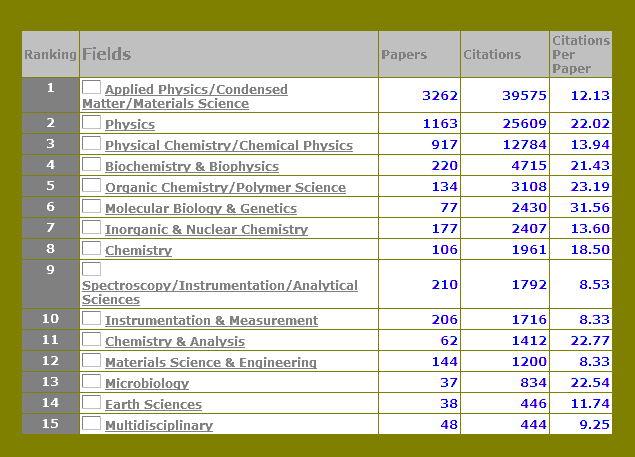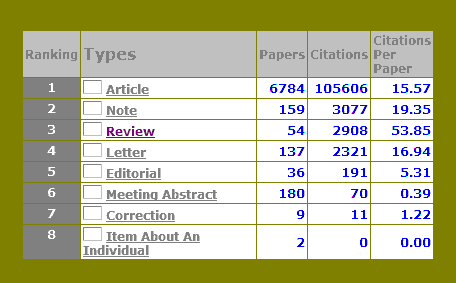Click on Analyse Results then on Fields. Wait a couple of minutes for the calculation to finish !

The table shows the ranking, the fields of science (according to the journal), the numbers of papers and citations, and the average number of citations per paper.
It is not surprising that "Condensed Matter/Materials Science" produces almost 3 times as many ILL papers as any other field, even though the number of citations per paper or impact is significantly greater for "Physics", "Chemistry" and "Biology" papers.
If we plot the time evolution of "Physics" we again find the large dip in the numbers of cited ILL papers for the early 90's, when the reactor was shut down. However, the number of cited ILL papers is at present greater than at any time in the past. (Don't try to plot the "Condensed Matter" evolution - it takes far too long).
If we plot the time evolution of "Biochemistry and Biophysics", we naturally find the 90's dip, but in this field the impact in recent years has not been much greater than it was in the 80's, which is disappointing.
Now click on Analyse Results then on Article Types.

The table shows that the main type of paper is simply a "Scientific Article", which has a respectable 15+ average cites per paper. A few dozen "Reviews" have a much higher average number of cites (50+); if we click on this article type to view the individual papers, we find that the expected number of cites is also high, and indeed higher than the actual number of cites for all but a few reviews.
ILL apparently does not produce very many highly cited reviews, and there are apparently few articles classified as "letters". This classification should then be treated with caution.